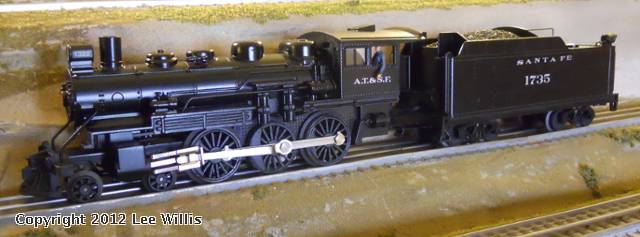Several people, including me, have commented on thoughts or plans to modify it, updating it to a later period, since it is a rather early locomotive.
Anyway, here is my effort.

This started out as the gray UP version offered by Williams - the gray one -- after getting it I really did not like the colors. I had no particular prototype in mind - just wanted to end up with something that would look appropriate, if among the older steam locos, on my 1950s layout.
In modifying it I cut down the stack by about 3/16 inch. Cut down the two domes by about 1/4 inch. Cut down the cab by 1/8th inch. Added two other domes. Added a bunch of "locomotive-y equipment things" to it here and there on both sides along with a lot of additional piping, etc., just to add some eye candy/detail. I have no idea what the equipment I added is: just interesting stuff from my parts bin that looked sort of like equipment in several photos of USRA locos around WWI, usually put about where I saw that equipment on photos.
I added handrails, lanterns and a bit of detail here and there to the tender. Glass and window detail to the cab, and two figures. Painted it satin black and had more SF than UP decal sheets, so it ended up ATSF. I have a nice brass bell to put between the stack and the first dome but ran out of epoxy, so will wait and get some tomorrow and attach it then.
Here is is in company with the new Lionel conventional Mogul, which does not run nearly as slowly, smoothly, but has sound (and cost nearly 3X as much). I like the Williams as much as any loco I have ever bought - might be the best bargain I know of . . . this is a very good runner and quite bashable.





